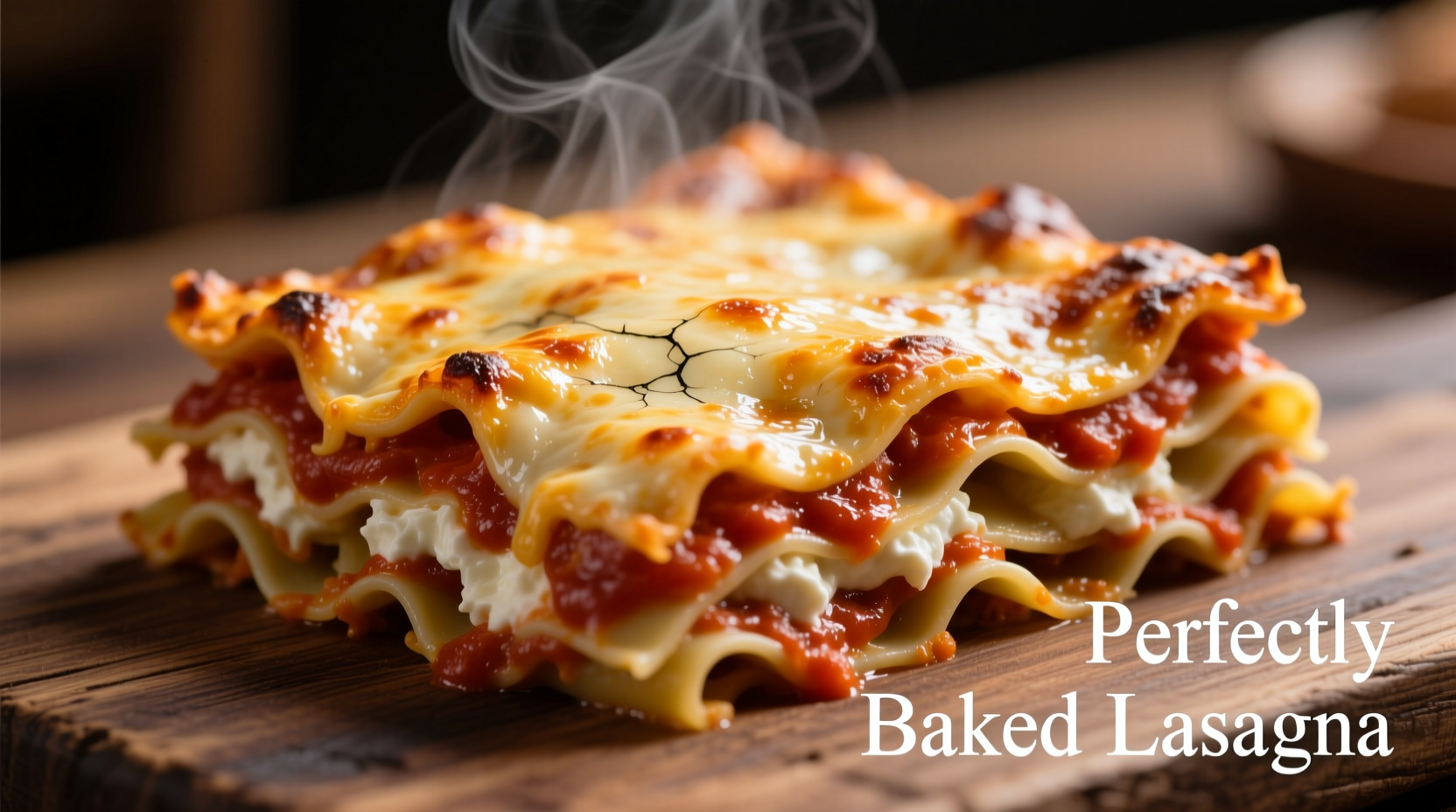Getting the temperature right for lasagna isn't just about following a number—it's understanding how heat transforms your ingredients into that perfect layered masterpiece. Whether you're a first-time lasagna maker or refining your technique, this guide delivers precise temperature guidance backed by culinary science.
Why 375°F Is the Goldilocks Zone for Lasagna
Lasagna requires a balancing act: hot enough to cook the pasta layers thoroughly and meld flavors, but not so hot that the cheese scorches or the sauce separates. At 375°F (190°C), you achieve what professional chefs call the "sweet spot" where:
- The pasta sheets soften without becoming mushy
- Cheese melts evenly without oil separation
- Sauce simmers gently to develop complex flavors
- Internal temperature reaches the safe 165°F (74°C) food safety threshold
According to the USDA Food Safety and Inspection Service, cooked dishes containing meat or dairy must reach 165°F internally to eliminate harmful bacteria. A properly baked lasagna at 375°F typically achieves this critical internal temperature within 45 minutes.
Lasagna Temperature Guide for Every Kitchen Scenario
| Scenario | Recommended Temp | Baking Time | Special Instructions |
|---|---|---|---|
| Standard fresh lasagna | 375°F (190°C) | 45-55 minutes | Cover with foil first 30 minutes |
| Convection oven | 350°F (175°C) | 35-45 minutes | Reduce temp by 25°F from standard |
| Frozen lasagna | 350°F (175°C) | 70-90 minutes | Thaw overnight for best results |
| Vegetarian lasagna | 360°F (180°C) | 40-50 minutes | Add extra moisture to prevent drying |
How Oven Type Changes Your Temperature Strategy
Not all ovens heat equally. Modern convection ovens circulate hot air, requiring lower temperatures than conventional models. The Culinary Institute of America's cooking guidelines recommend reducing standard temperatures by 25°F when using convection settings to prevent over-browning.
For gas ovens, which often have hotter bottom elements, position your lasagna in the middle rack and consider reducing temperature by 15°F. Electric ovens typically maintain more consistent temperatures, making them ideal for layered dishes like lasagna that require even cooking.

Avoid These 3 Temperature-Related Lasagna Disasters
1. The Soggy Bottom Syndrome
When lasagna bakes at too low a temperature (below 350°F/175°C), moisture can't evaporate properly, resulting in watery layers. Fix this by:
- Pre-cooking watery vegetables like zucchini
- Using a slightly higher temperature (385°F/195°C) for the final 10 minutes
- Letting lasagna rest 15 minutes before serving to allow layers to set
2. Burnt Cheese, Raw Pasta Paradox
Overly high temperatures (above 400°F/205°C) cause cheese to burn before pasta cooks through. Prevent this by:
- Covering with foil for the first 30 minutes of baking
- Using a thermometer to verify oven accuracy (many home ovens run hot)
- Placing a baking sheet on the rack below to catch drips and reflect heat
3. The Cracked Surface Catastrophe
Sudden temperature changes cause lasagna to crack when removed from oven. Avoid this by:
- Turning off oven and propping door open for 5 minutes before removing
- Using room-temperature ingredients before assembly
- Maintaining consistent oven temperature (avoid opening oven frequently)
Pro Tips for Temperature-Perfect Lasagna Every Time
Professional chefs at America's Test Kitchen discovered that lasagna continues cooking internally after removal from the oven—a phenomenon called "carryover cooking." Their research shows that lasagna gains 5-8°F (3-4°C) during the resting period.
For restaurant-quality results at home:
- Use an oven thermometer to verify actual temperature (home ovens often vary by 25°F)
- Check internal temperature at the center with an instant-read thermometer
- Let lasagna rest 15 minutes before cutting to allow layers to stabilize
- For deeper dishes, increase baking time by 10-15 minutes without raising temperature
When to Adjust Temperature Based on Your Recipe
Certain ingredients require temperature adjustments. Meat-heavy lasagnas benefit from the full 375°F to render fat properly, while delicate seafood versions need 350°F to prevent overcooking. The Food Network's test kitchen found that lasagnas with fresh pasta sheets require 25°F lower temperatures than those with dried noodles.
Remember that oven rack position matters—top rack positions expose lasagna to more direct heat, potentially requiring a 15°F reduction. Bottom rack positions may need slightly higher temperatures for even cooking.
FAQ: Lasagna Temperature Questions Answered
Can I bake lasagna at 350°F instead of 375°F?
Yes, but you'll need to extend baking time by 10-15 minutes. At 350°F, lasagna typically requires 55-65 minutes to reach the proper internal temperature of 165°F. This lower temperature works well for convection ovens or recipes with delicate ingredients like seafood.
How do I know when lasagna is done baking?
Lasagna is done when a thermometer inserted into the center reads 165°F (74°C) and the edges are bubbling gently. The top should be golden brown, and a knife inserted should meet no resistance in the pasta layers. Let it rest 15 minutes before serving—the layers will continue setting during this time.
Why does my lasagna boil over in the oven?
Boiling over usually happens when the oven temperature is too high (above 400°F) or when the dish is overfilled. To prevent this, leave at least 1 inch of space below the rim, cover with foil for the first 30 minutes, and maintain the recommended 375°F temperature. Using a deeper baking dish also helps contain bubbling sauce.
Should I cover lasagna with foil while baking?
Yes, for the first 30 minutes of baking. Covering prevents the cheese from burning before the interior cooks through. Remove the foil for the final 15-25 minutes to allow the top to brown properly. If the top browns too quickly, tent loosely with foil for the remaining time.
Can I bake frozen lasagna without thawing?
Yes, but you'll need to adjust both temperature and time. Bake frozen lasagna at 350°F for 70-90 minutes, covering with foil for the first hour. For best results, thaw overnight in the refrigerator before baking at the standard 375°F for 45-55 minutes. Never partially cook and refreeze lasagna due to food safety concerns.











 浙公网安备
33010002000092号
浙公网安备
33010002000092号 浙B2-20120091-4
浙B2-20120091-4